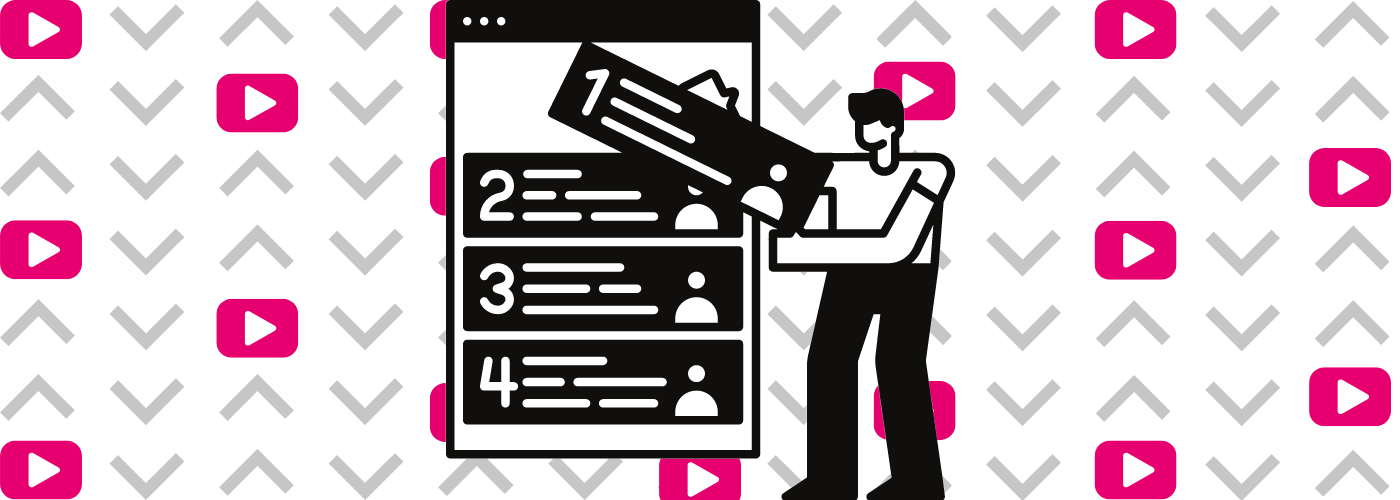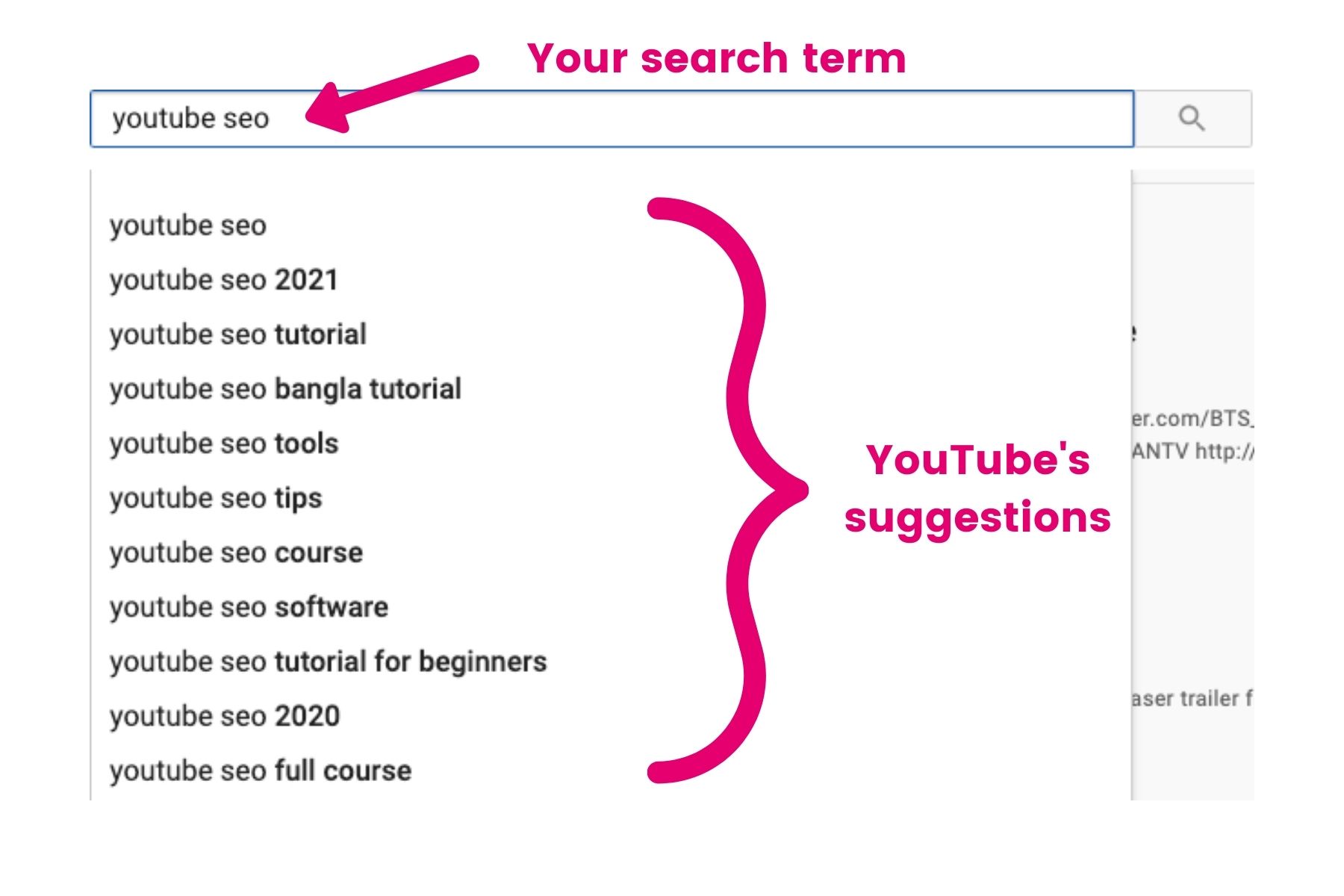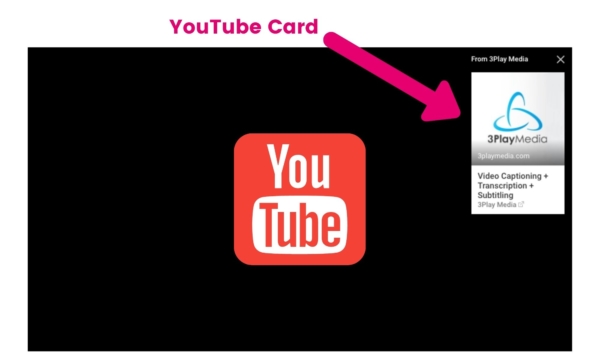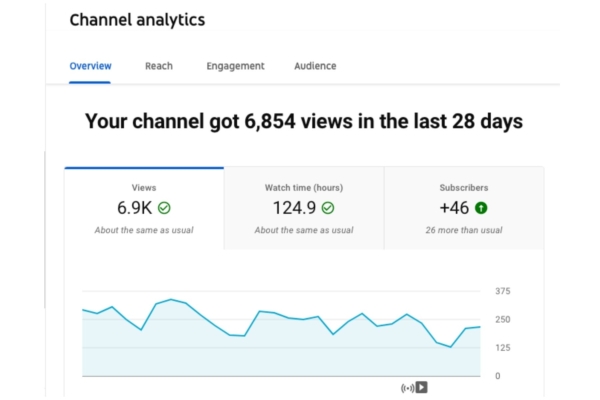YouTube SEO Strategy: Tips to Boost Your Search Ranking
Updated: June 26, 2024
Automate Your YouTube Captioning [Learn About the Integration]
YouTube is the second-largest search engine in the world – second only to its parent company, Google. Eight out of 10 video search results are YouTube videos, and the platform is constantly growing, with over 500 hours of video uploaded to YouTube every minute. How do you avoid getting lost in the sea of videos? Your best bet is to optimize great videos for search using video SEO best practices. With these tips, you can create a solid YouTube SEO strategy.
What is a YouTube SEO strategy?
Search Engine Optimization (SEO) is the ever-changing practice of designing web content to rank highly in search engine results pages (SERPs). Search is often the gatekeeper to your content, so optimizing your content for search is necessary to attract traffic and grow a following.
Unlike Google, which uses backlinks and other factors to evaluate rank, YouTube SEO involves optimizing your channel, playlists, metadata, descriptions, and videos. You can optimize your videos for search both within and outside of YouTube.
You may know the basics of SEO for YouTube videos, like including keywords in titles, meta descriptions, and tags. However, there’s more you can do for YouTube SEO through video accessibility. Since search engine bots cannot watch videos, they rely on accompanying text data to index them properly. A key component to a YouTube SEO strategy is harnessing the power of your video’s text in the form of transcripts, closed captions, and subtitles, which can positively impact user experience, engagement, watch time, viewership, and SEO.
Here are ten tips for maximizing views and boosting your YouTube SEO.
YouTube SEO Tips
- Select a great keyword
- Include accurate closed captions
- Add a transcript to your video description
- Offer subtitles in multiple languages
- Write a keyword-optimized title, description, and tags
- Say your target keyword in your video
- Use a compelling thumbnail
- Add cards and end screens
- Focus on user engagement
- Track your analytics
1. Select a great keyword
Before you can boost YouTube SEO, you need to select the right keyword or phrase for your video. Keywords often land in video titles and metadata, and when spoken in the audio, keywords appear in captions and transcripts. That’s a win-win for SEO.
Keywords and keyword phrases should correspond with a) whatever describes your video accurately and b) the words and phrases that users enter in search engines to find content like yours.
To find out what phrases and keywords people use in search, you’ll have to do some keyword research. An easy strategy to find a keyword for your video is to use YouTube’s Search Suggest. Type a word or phrase relevant to your industry in the search bar and see the suggestions that YouTube offers.
You can also find keywords from your YouTube search report (in the YouTube Studio under Traffic Sources > YouTube search).
To check if you have a good keyword, search for it on YouTube and see how many “About results” it generates. Ideally, you want to find keyword variations with high search volume but less competition so you can stand out from the crowd.
Selecting the best keyword is easier said than done, but plenty of tools can help. Some tools include:
With these tools, you can explore other resources such as keyword volume, which is the number of searches the keyword gets per month on Google, and cost per click, which is the average cost per click for the term on Google Ads.
After you’ve identified a great keyword, include it in your video file’s name so YouTube knows your video’s topic. For example, your file name could be “makeup-tutorial-for-the-hulk” followed by your video file type.
Pro tip: For individual videos, try going after “long tail” keyword phrases, which are more specific. For example, “makeup tutorial for the Hulk” would be a more targeted keyword phrase than just “makeup tutorial.”
2. Include accurate closed captions
YouTube automatically transcribes your videos to provide automatic captions. However, YouTube’s auto-captions are only 70% accurate, making for incomprehensible and often embarrassing captions.
Google rewards helpful search results and penalizes spam. Part of the definition of spam is “automatically generated gibberish,” which is an apt description of most auto-captions. By using inaccurate captions, you risk being labeled as spam and losing search rank for your YouTube channel.
To combat the detrimental effects of auto-captions for YouTube SEO strategy, you’ll want to add accurate closed captions through an SRT file to your YouTube videos.
Search engines can crawl text, but they can’t watch videos. Your captions will be full of relevant keywords that indicate what your video is about so that Google can crawl your content and rank accordingly.
There are multiple options for adding captions to YouTube videos. Some YouTubers use the automated transcript as a starting point and manually clean up errors. There are other DIY transcription options, which are cheap but time-consuming and tedious.
The simplest solution is to send your videos to a professional video transcription service. Professional video transcription is high-quality with a quick turnaround time.
In addition to increasing SEO, captions also have the following benefits:
- Higher search rank: Digital Discovery Networks performed a study that proves captions on YouTube videos boost SEO. They saw an increase in views by 13.48% in the first 2 weeks using captions and 7.32% overall. To test this, they searched for a keyword phrase that was present only in their video captions, not in the title, description, tags, or metadata. Captioned videos ranked highly for the phrase because search engines could crawl the caption text.
- Better user experience and engagement: Closed captions increase viewership because they keep the viewer engaged regardless of their access to audio. This is especially important for mobile users who may not have access to audio. Since more than 70% of YouTube watch time comes from mobile devices, it’s imperative to have accurate captions. YouTube videos with closed captions are proven to increase user engagement, earning more likes, shares, and comments than videos without captions. Higher engagement, in turn, boosts video search ranking factors, which translates to more views. In addition, higher engagement leads to increased watch time, a critical metric for determining search rank on YouTube. Longer watch times correlate directly with higher SERP ranks.
- Video accessibility: In addition to increasing SEO, closed captions make your YouTube videos accessible to viewers who are deaf or hard of hearing. Captions also let hearing people watch your video on a noisy train or in a quiet library with the sound muted. In essence, captions make your video viewable, understandable, and enjoyable for a larger audience.
3. Add a transcript to your video description
The video description is the best option for displaying your transcript on YouTube. The description field fits 5,000 characters, which is usually enough to fit a transcript for a dialogue-heavy, 10-minute video. If your transcript doesn’t fit or you want to include other important information in the description, like a call-to-action, you can add a truncated version with a link to the full version on a separate web page.
Although Backlinko’s research found no correlation between descriptions optimized for a certain keyword and the rankings for that term, keyword-rich descriptions are still a recommend best practice as they can help your video rank for related terms and appear as a “suggested video.” Transcripts can also boost engagement by making content quickly scannable.
Pro tip: Make video transcripts your content marketing shortcut
Many brands are doing amazing outreach with video, but marketers often fail to realize transcripts can do so much more. Videos can be a starting point for content creation and targeted inbound marketing efforts through video transcripts and derivative content.
Consider using a video transcript to boost SEO by creating useful, shareable content. Some uses for video transcripts include:
- Blogs
- Infographics
- Whitepapers
- Fact sheets
- Website copy
4. Offer subtitles in multiple languages
Just as English captions make your videos accessible to more viewers, translations further expand your audience and increase YouTube SEO. YouTube’s global reach is massive. Only 16.4% of YouTube’s site traffic comes from the U.S., and around the world, over 2 billion logged-in users watch YouTube every month.
Foreign language subtitles let international and non-native English-speaking viewers enjoy your videos. Search engines will also index your translated caption files and include your video in search results in those languages. This can be huge for a YouTube SEO strategy since you have a better chance of ranking higher for non-English keywords due to lower competition.
Remember to always check your translations for accuracy, and consider using a vendor for guaranteed high-quality subtitles.
5. Write a keyword-optimized title, description, and tags
Once you have a great keyword, you need to ensure that the texts associated with your video are keyword-optimized.
For example, if you publish videos about makeup tutorials, make sure you optimize the title, descriptions, and tags for the phrase “makeup tutorial.”
Keep in mind: search engines have wizened up to keyword-stuffing, the practice of over-using keywords and variations of keywords to try to hack the system. Don’t bother with that. Write for humans, not robots, or else you may get penalized.
Once you’ve done keyword research and picked your keywords, incorporate them naturally into the following fields:
- Title: Fits 100 characters but truncates at 70 characters, meaning your most important information and keyword should be close to the front. Use compelling language to encourage a click: “how-to,” “advice,” “tips,” or numbered lists can help. For example: “7 Tips to Increase Video Subscription Rates.”
- Meta-Description: Fits 5,000 characters but truncates at around 120 characters depending on your device. For e-commerce sites, it is crucial to include a link to your product, considering more than half of consumers are influenced by product videos. Remember to include the http:// or it won’t be clickable.
- Tags: Fits approximately 500 characters, but don’t go overboard. Use double quotes (“) to surround phrases so your video is an exact match for a long-tail keyword phrase. For example: instead of tagging your video as “makeup” and “tutorial,” tag it as “makeup tutorial.” Think like a user and always add tags in order of importance.
YouTube Creator Academy lists the following tips for writing searchable descriptions:
- Give an overview of your video using natural language, not just a stream of keywords.
- Put the most important keywords toward the beginning of your description.
- Identify 1-2 main words that describe your video and feature them prominently in both your description and title.
- Use Google Trends and Google Ads Keyword Planner to identify popular keywords and their synonyms. Including these terms can help you maximize traffic from search.
- Avoid irrelevant words in your description, which can create a poor viewing experience and may violate YouTube policies.
If you plan to post your video on several domains in addition to YouTube, remember to vary the keyword phrases slightly. You don’t want to compete against yourself across different sites.
Lastly, use honest, relevant terms. Trying to ride trending topics irrelevant to your video content will only result in a negative score later.
6. Say your target keyword in your video
If you don’t say your target keyword in your video, it won’t appear in your captions or transcript, two vital components of a successful YouTube SEO strategy.
Try to incorporate your keyword thoughtfully and naturally in your video as not to overstuff your transcript. If it’s helpful, plan a script in advance and try to incorporate your keyword at the beginning of your video so it appears early on in your transcript.
7. Use a compelling thumbnail
Choosing the right video thumbnail image makes a drastic difference in click-through rate. Use high-quality, high-contrast images that have a 16:9 aspect ratio. Facial close-ups work best. YouTubers can choose which frame to display as the video thumbnail. YouTube will present 3 screenshots to choose from, but you can also select a shot of a different moment in the video or upload your own image.
If you need ideas for images, try using sites such as Canva, which has thumbnail templates just for YouTube videos.
Note that YouTube overlays the video duration in the lower corner of the thumbnail; make sure it doesn’t obstruct anything important in your thumbnail. Also, keep in mind that Google uses image recognition to automatically filter out certain imagery, such as the YouTube logo.
Ideally, you want an image that is a great visual representation of your target keyword; this will take your presence in relevant results even further.
8. Add YouTube cards and end screens
YouTube cards are preformatted notifications that encourage people to take desired actions during your video. Once set up, cards appear in the top right of your videos for users to click on and explore. Since YouTube aims to keep people on YouTube, cards are a great way to boost your ranking.
You can add up to five cards in a video. Cards can include various CTAs, such as directing viewers to another channel, donating to a nonprofit, or crowdfunding.
End screens appear after a video finishes and tell a viewer what they can do next. Both cards and end screens can optimize viewer experience and encourage them to watch another video or take further action when they’ve finished. End screens can direct viewers to these elements:
- View other YouTube videos, playlists, or channels.
- Subscribe to your channel.
- Explore your website, merchandise, or crowdfunding campaigns.
9. Focus on user engagement
Engagement metrics such as comments, likes, shares, and subscriptions strongly correlate with higher rankings, according to Blacklinko’s research. Google cares most about how viewers respond to your content because that’s what keeps people on their site. To increase engagement, try to encourage viewers to share, like, or comment on your videos, and take the time time to respond to comments and messages.
YouTube watch time
Watch time, as you might imagine, is very important. Watch time refers to the actual time spent watching a video (not the percent watched). For example, 50% completion of a 10-minute video will rank higher than 100% completion of a three-minute video. It’s important to hook your viewer in the first 15 seconds with a teaser. If your video describes how to do a DIY project, show the viewer the finished product at the beginning to spark their interest.
Session watch time
Session watch time is another important measurement of user engagement. YouTube values how a video contributes to a user’s overall viewing session. Did the viewer leave the site after the video, or did they watch three more videos? YouTube wants people to spend more time on their platform and favors videos that help them achieve that goal. Although it may seem counterintuitive, videos designed to bring users to your website will hurt your SEO because they move viewers away from YouTube.
User intent
Google can read your mind. Ok, not quite, but Google does understand what searchers mean. For example, if you were to search “how to get more views on YouTube,” you would be shown a video called “How to Get More Views on YouTube in 2021 – in 2 Minutes.” When creating a title for your videos, be sure to write something compelling and relevant. You might be tempted to title use the #1 searched phrase or term as your title, but don’t. Instead, answer the user’s question in your title, and add the search term to the description. Trust us, Google knows.
Growing subscriber base
Subscribers can generate a lot of watch time within the first week your video is published. The more you can amplify user experience and engagement in the first seven days, the better. It’s a good idea to post regularly, so your subscribers know when to expect a new video.
Use playlists
Relevant, short (four to six videos), subcategorized playlists can greatly boost user experience and engagement. It also makes it easy to share multiple videos at a time by sharing a link to the playlist instead of one video.
10. Track your analytics
The only way to know if your YouTube SEO strategy is working is to track your analytics. Metrics can help you understand where your videos are doing well and where they might need some tweaking. YouTube offers several analytics reports to help you track your performance.
There are many analytics you can track, but every YouTuber should know these metrics:
- Watch Time: Watch time is the total number of minutes viewers spent watching your videos. This metric matters because YouTube boosts videos and channels with higher watch times in their search results as watch time is a great indicator of engagement.
- Impressions Click-Through Rate: Impressions click-through rate measures the rate at which people watch your video after seeing it on their homepage, recommendation section, or trending section. Impression click-through rates will often spike after you release your video and decline later, but it’s still an important metric to track as it can help you refine your thumbnails.
- Card Click-Through-Rate: Cards are preformatted notifications that encourage people to take action while watching your video. Analyzing card click-through rates can help you optimize your card CTAs, timing, duration, and placement.
- Unique Viewers: Unique viewers is the estimated number of individuals who watch your videos over a certain period of time. This metric helps you audience your audience size and can be helping in evaluating engagement.
- Traffic Sources: The Traffic Sources report shows you how viewers found your videos and which sources contribute to the most engagement. You can use this data to better optimize your video promotion strategy by deciding where to share your content.
- Subscriber Growth: YouTube’s Subscribers Report shows you which videos, locations, and time periods gained and lost subscribers. With this data, you can learn which topics resonate with your subscribers and where to target new subscribers.
Monitoring these metrics over time will help you see which videos have the most engagement and the factors contributing to their success. Take note of what sets these videos apart from ones that don’t perform as well—you might notice patterns in the topic, type of video, length, or posting schedule.
This article was originally published on March 7, 2016, by Emily Griffin and has since been updated.
Further Reading

Subscribe to the Blog Digest
Sign up to receive our blog digest and other information on this topic. You can unsubscribe anytime.
By subscribing you agree to our privacy policy.











